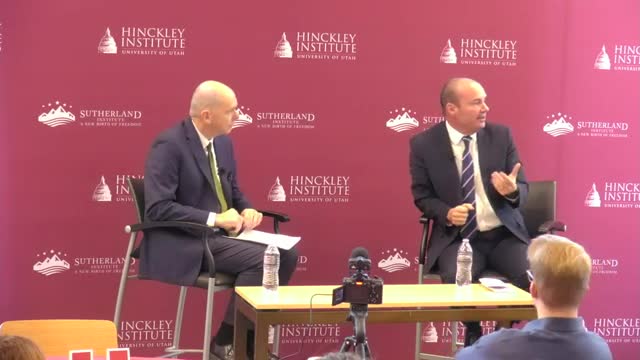Supreme Court dismantles Chevron deference reshaping regulatory landscape
October 14, 2024 | Hinckley Institute of Politics, Citizen Journalism , 2024 -2025 Utah Citizen Journalism, Elections, Utah
This article was created by AI summarizing key points discussed. AI makes mistakes, so for full details and context, please refer to the video of the full meeting. Please report any errors so we can fix them. Report an error »

In a recent government meeting, officials discussed significant changes in regulatory compliance and judicial interpretation of environmental laws, particularly focusing on the implications of the REINS Act and the recent Supreme Court decision regarding Chevron deference.
The REINS Act, if enacted, is expected to streamline the regulatory process by reducing the number of guidance documents issued by agencies like the Environmental Protection Agency (EPA). Proponents argue that this would lead to clearer regulations and less controversy, as agencies would be required to adhere more closely to the statutes enacted by Congress. This shift aims to create a more predictable regulatory environment, potentially easing compliance burdens for businesses.
A key topic of discussion was the Supreme Court's recent ruling in the Loper Bright case, which overturned the long-standing Chevron doctrine. This doctrine had previously granted federal agencies significant leeway in interpreting statutes, allowing courts to defer to agency interpretations unless they were deemed unreasonable. The removal of Chevron deference is seen by some as a move towards greater fairness in judicial proceedings, ensuring that all parties, regardless of their status, are treated equally in court. Critics of the Chevron doctrine had argued that it created an imbalance, favoring bureaucratic interpretations over those of ordinary citizens.
The implications of these changes are profound, as they may reshape the landscape of environmental regulation and compliance. With the Chevron doctrine no longer in effect, individuals and businesses may find new avenues to challenge agency decisions, potentially leading to increased litigation and a reevaluation of how environmental laws are enforced. The discussions highlighted a pivotal moment in regulatory policy, with stakeholders closely monitoring how these changes will unfold in practice.
The REINS Act, if enacted, is expected to streamline the regulatory process by reducing the number of guidance documents issued by agencies like the Environmental Protection Agency (EPA). Proponents argue that this would lead to clearer regulations and less controversy, as agencies would be required to adhere more closely to the statutes enacted by Congress. This shift aims to create a more predictable regulatory environment, potentially easing compliance burdens for businesses.
A key topic of discussion was the Supreme Court's recent ruling in the Loper Bright case, which overturned the long-standing Chevron doctrine. This doctrine had previously granted federal agencies significant leeway in interpreting statutes, allowing courts to defer to agency interpretations unless they were deemed unreasonable. The removal of Chevron deference is seen by some as a move towards greater fairness in judicial proceedings, ensuring that all parties, regardless of their status, are treated equally in court. Critics of the Chevron doctrine had argued that it created an imbalance, favoring bureaucratic interpretations over those of ordinary citizens.
The implications of these changes are profound, as they may reshape the landscape of environmental regulation and compliance. With the Chevron doctrine no longer in effect, individuals and businesses may find new avenues to challenge agency decisions, potentially leading to increased litigation and a reevaluation of how environmental laws are enforced. The discussions highlighted a pivotal moment in regulatory policy, with stakeholders closely monitoring how these changes will unfold in practice.
View full meeting
This article is based on a recent meeting—watch the full video and explore the complete transcript for deeper insights into the discussion.
View full meeting

